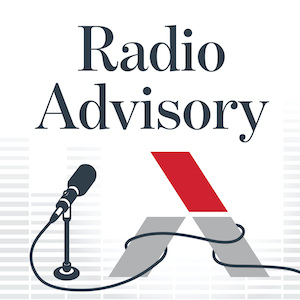Relatively few hospitals have complied with a new law requiring them to publish the previously "secret" prices they negotiate with insurers—but of those that have, a new analysis from the New York Times suggests that prices vary widely based on a given patient's insurance plan.
Radio Advisory: The biggest transparency and surprise billing policies coming your way
Different prices for the same procedure
For the analysis, the Times partnered with Morgan Henderson and Morgane Mouslim, two researchers from the University of Maryland-Baltimore County, to develop a database of the prices charged to different insurers by 60 major hospitals in the United States.
They found that the same procedures often were billed at dramatically different prices for different insurance plans—even at the same hospital.
For example, at Intermountain Medical Center in Utah, the billed price for a rabies prevention treatment for a child ranges from $1,284 for those insured by SelectHealth, a regional insurer owned by Intermountain, to $3,457 for those insured by Regence BlueCross BlueShield, to $4,198 for those insured by Cigna, the Times found. Meanwhile, patients who pay cash are billed $3,704, the Times found.
According to the Times, the analysis found that half the insurers at Intermountain are paying rates higher than the "cash price" rates for uninsured patients.
The Times also compared prices to Medicare rates, which hospital associations estimate typically cover 87% of the cost of providing care.
The analysis found that at many hospitals, major health plans are billed at more than four times the Medicare rate for a routine colonoscopy—and some plans are billed at more than 10 times the Medicare rate for an MRI scan.
However, according to the Times, most hospitals haven't posted all of their prices yet—despite federal requirements that they do so.
As of now, the maximum fine from the federal government for failing to post prices is $109,500 per year, although CMS said in July it intends to increase that fine next year to as much as $2 million per year for large hospitals.
For its part, CMS as of July has sent warning letters to almost 170 hospitals that have yet to post prices, but the agency hasn't yet imposed any fines.
Catherine Howden, a spokesperson for CMS, said the agency expects "hospitals to comply with these legal requirements, and will enforce these rules." If the hospitals don't comply within 90 days of receiving a warning letter, Howden said the hospitals "may be sent a second warning letter."
'They don't want their secrets out there'
Until now, it has been difficult if not impossible for researchers, employers, or patients to get list prices for different procedures, the Times reports.
"It's not just individual patients who are in the dark," Martin Gaynor, an economist at Carnegie Mellon University who studies health pricing, said. "Employers are in the dark. Governments are in the dark. It's just astonishing how deeply ignorant we are about these prices."
Jennifer Whitener, the human resources director for Larimer County, Colo., which covers 3,500 workers and families within its health plan, said county officials in 2018 were unable to get negotiated rates from its insurer.
"We pushed the issue all the way to the CEO level," Whitener said. "They said it was confidential."
"They don't want their secrets out there," Whitener added. "They want to be able to tout that they've got the best deal in town, even if they don't."
For their part, insurers and hospitals have said the prices now published online don't fully reflect the actual prices they negotiate, leaving out important parts of their contracts, such as bonuses for high-quality care, the Times reports.
"These rate sheets are not helpful to anyone," Molly Smith, VP for public policy at the American Hospital Association (AHA), said. "It's really hard to say that when a lot of hospitals are putting in a lot of effort to comply with the rule, but I would set them aside and avoid them."
AHA added that it is an "anomaly" that some patients with insurance are seeing higher prices than uninsured patients would.
For their part, three of the largest insurers—Cigna, Blue Cross Blue Shield Association, and Humana—have issued statements to the Times saying they support price transparency.
Separately, Matt Eyles, CEO of America's Health Insurance Plans, said, "Insurers want to make sure they are negotiating the best deals they can for their members, to make sure their products have competitive premiums." (Kliff/Katz, "The Upshot," New York Times, 8/22)
The biggest policies coming your way
As Covid-19 begins to slow down in the United States, the health care world is starting to refocus on some of the issues that permeated the space before the pandemic. In this episode, Rae sits down with Advisory Board's Rob Lazerow and Heather Bell to talk about how three new policies—hospital price transparency, payer price transparency, and surprise billing—will affect the health care industry.
Don't miss out on the latest Advisory Board insights
Create your free account to access 1 resource, including the latest research and webinars.
Want access without creating an account?
You have 1 free members-only resource remaining this month.
1 free members-only resources remaining
1 free members-only resources remaining
You've reached your limit of free insights
Become a member to access all of Advisory Board's resources, events, and experts
Never miss out on the latest innovative health care content tailored to you.
Benefits include:
You've reached your limit of free insights
Become a member to access all of Advisory Board's resources, events, and experts
Never miss out on the latest innovative health care content tailored to you.
Benefits include:
This content is available through your Curated Research partnership with Advisory Board. Click on ‘view this resource’ to read the full piece
Email ask@advisory.com to learn more
Click on ‘Become a Member’ to learn about the benefits of a Full-Access partnership with Advisory Board
Never miss out on the latest innovative health care content tailored to you.


